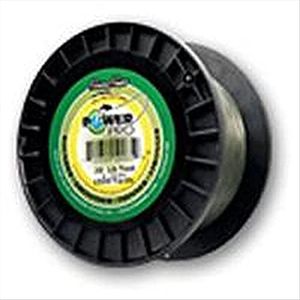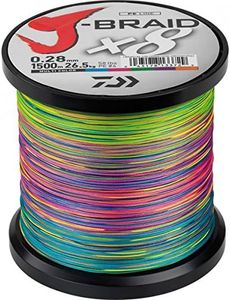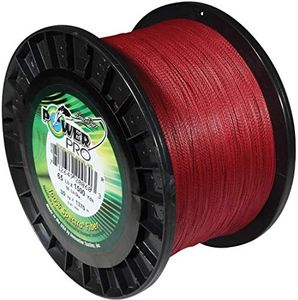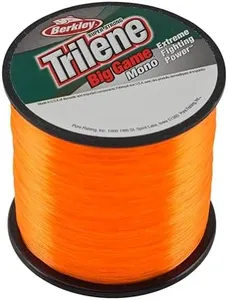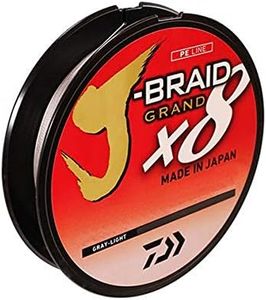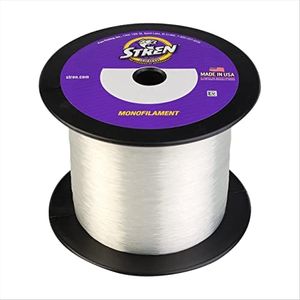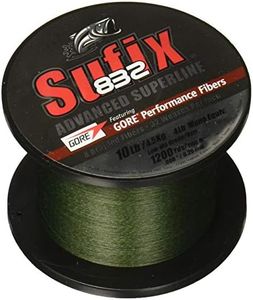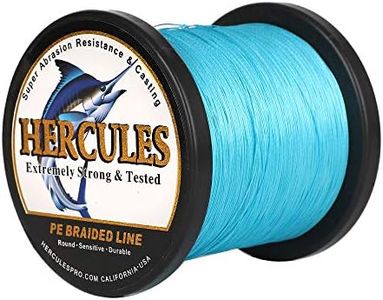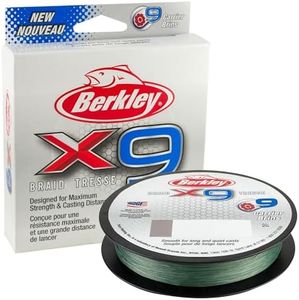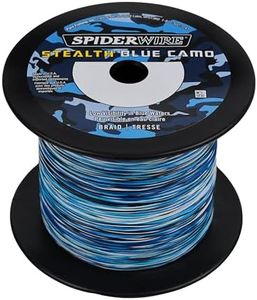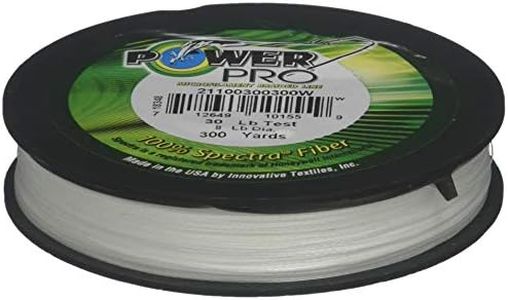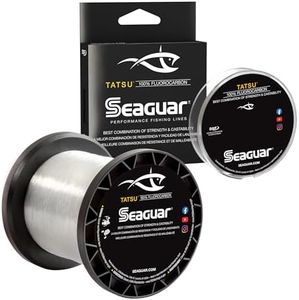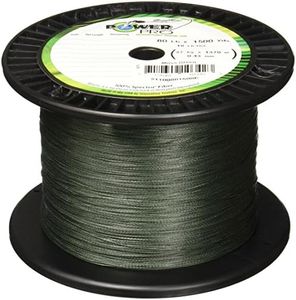We Use CookiesWe use cookies to enhance the security, performance,
functionality and for analytical and promotional activities. By continuing to browse this site you
are agreeing to our privacy policy
10 Best Bass Fishing Lines
From leading brands and best sellers available on the web.Buying Guide for the Best Bass Fishing Lines
When choosing a fishing line for bass fishing, it's important to understand that the line acts as the critical link between your rod and the fish. A good line helps you cast more effectively, feel even the slightest bites, set hooks securely, and land bass with confidence. Different lines offer different strengths and weaknesses, and your choice should match not only the fish you're targeting but also the waters you'll be fishing and your personal style. By understanding the key specifications, you can select a line that helps you succeed and enjoy bass fishing even more.Line TypeThe fishing line type refers to the basic material and construction of the line, with the main types being monofilament, fluorocarbon, and braided. This is important because each type behaves differently in the water, affecting castability, visibility, strength, and sensitivity. Monofilament stretches and floats, which can be good for certain lures and forgiving for new anglers. Fluorocarbon sinks, is less visible underwater, and is more sensitive but tends to be stiffer. Braided line is extremely strong for its diameter, has no stretch, and is highly visible, which can help with certain techniques but spook fish in clear water. Picking the right type comes down to the fishing conditions and your technique: if you need versatility and ease, monofilament is a good starting point; for clear water and subtle presentations, consider fluorocarbon; and for dense cover or big fish, braid’s toughness may be what you need.
Pound Test (Line Strength)The pound test tells you how much weight the line can handle before breaking, which is crucial for landing bass, especially bigger ones or when fishing near underwater obstacles. Lower pound test lines (6-10 lb) are thinner and cast further, ideal for lighter tackle and open water. Medium pound tests (10-17 lb) balance strength and manageability for most bass fishing in average conditions. Higher pound tests (17-30 lb and above) are thicker and used for heavy cover or very large bass. To choose the right strength, consider the size of the bass in your waters, the thickness of the cover, and your technique—go lighter for finesse fishing in open water, and heavier if you expect bigger fish or more snags.
Line DiameterDiameter measures how thick the line is. Thinner lines are generally less visible to fish, allowing longer and more accurate casts, but they may lack strength and abrasion resistance. Thicker lines are tougher and can handle abrasion from rocks, wood, or vegetation but might be more visible and reduce casting distance. Smaller diameter is often best for finesse approaches or clear water, while thicker diameters are better for heavy cover. Match diameter with cover conditions and desired casting distance. If you’re fishing where bass are skittish, thinner line can help; if you’re fishing around sharp rocks or heavy weeds, a thicker line gives more durability.
Visibility / ColorThe color of your line affects how visible it is to both you and the fish. Clear or low-visibility lines are good for clear water when fish are wary. High-visibility lines (like bright green or yellow) are easier for you to see above water, which helps detect subtle bites, but may spook fish in clear water. There are also lines made specifically to blend in with weeds or murky water. To choose, think about the water clarity and how important it is for you to see your line—choose clearer or appropriate camo colors for shy fish in clear water, or high-visibility for watching your line in stained or muddy water.
Abrasion ResistanceAbrasion resistance refers to how well the line withstands being rubbed against rocks, logs, weeds, and other underwater obstacles. This is important because bass often live near or in cover, and low abrasion resistance can lead to sudden break-offs. Some lines are especially made to resist fraying and damage from rough surfaces. If you routinely fish in places with lots of rocks, wood, or other harsh surfaces, prioritize lines with high abrasion resistance. For open water with little cover, this concern is less critical.
StretchStretch measures how much the line will elongate under pressure. Some stretch absorbs shock and can prevent the hook from tearing out during a sudden jump or run, which is helpful for beginners or when using certain lures. No-stretch lines like braid offer more sensitivity and instant hooksets, which can be important for feeling subtle bites or fishing in heavy cover. Consider a line with more stretch for forgiving action and general use, or a low-stretch line if you prioritize sensitivity and sharp hooksets, particularly for techniques that demand feel.
